Hi River Roaders,
I remember walking on a reclaimed strip mine with my father many years ago (my dad worked on mine restoration), and he said that “if you provide the habitat, the creatures that belong in that habitat will find it”. That axiom is proving true on our grounds, as our on-going restoration is attracting the species that are naturally found in our habitat. Let’s take a look at some examples.
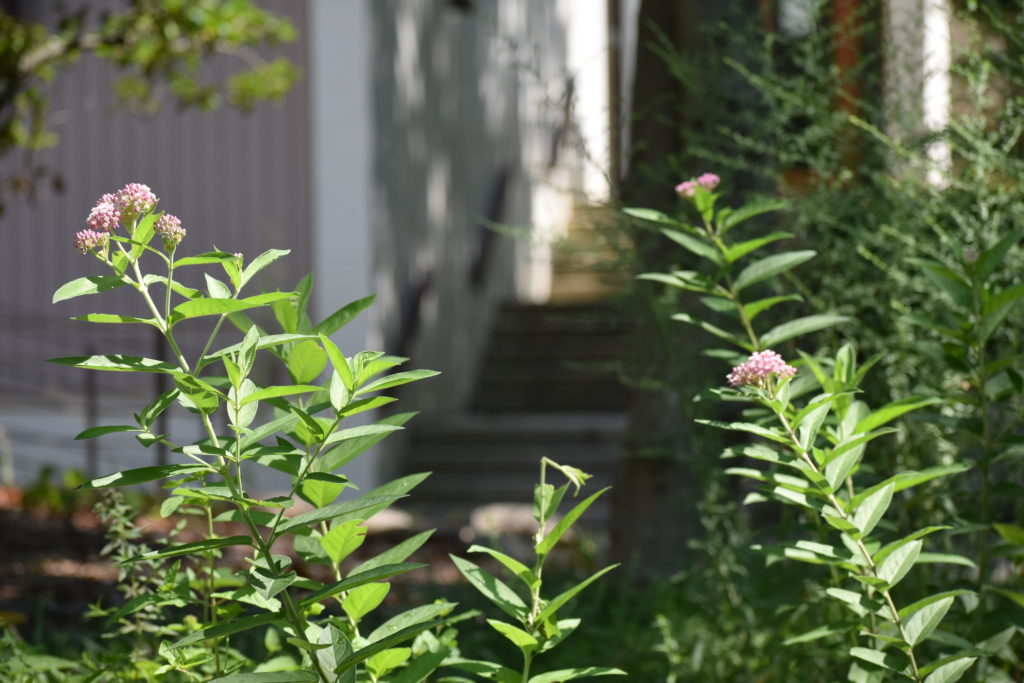
Earlier this summer, Jan planted a pollinator garden on our front plaza. Shown here are some of the first blooms of the Swamp Milkweed (Ascelpias incarnata). We were hoping that this monarch host plant would entice some butterflies to lay their eggs here.
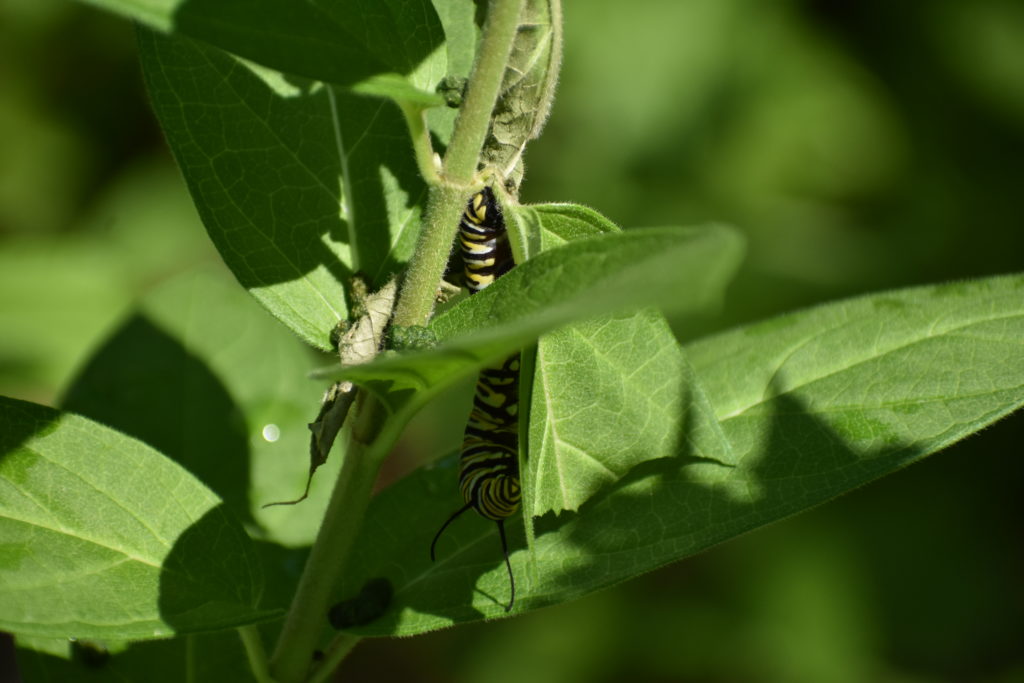
Success! Today I noticed that the leaves of several of our newly-planted milkweeds were eaten, and I found this Monarch butterfly caterpillar. We’ll track this individual (and hopefully more) as it goes thru its lifecycle and emerges from its chrysalis (if we can find it) as a butterfly. This is the first monarch caterpillar I’ve ever seen on our grounds.
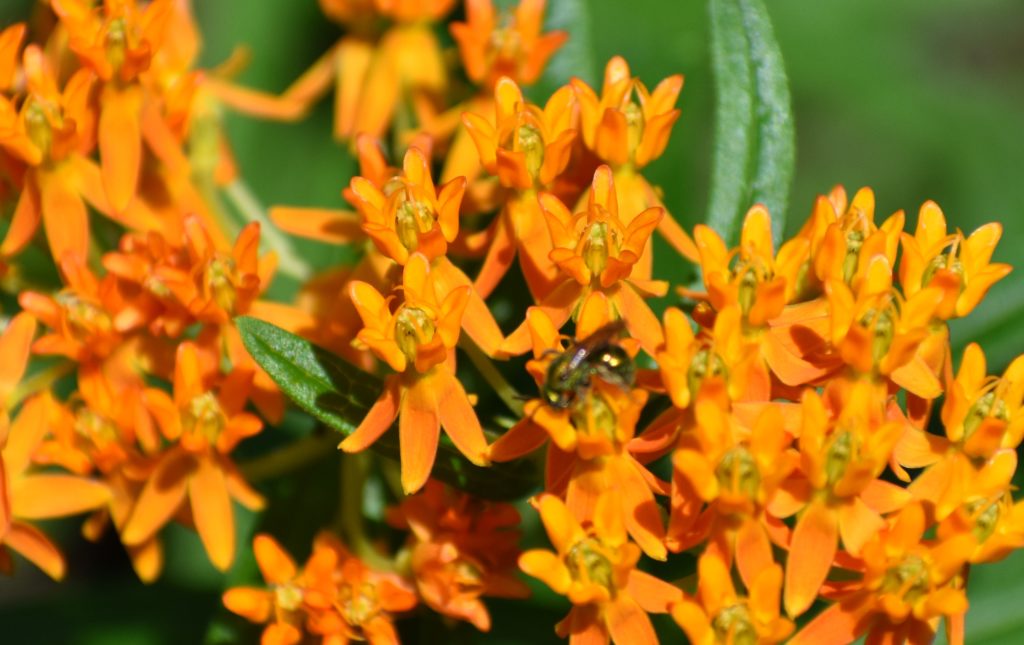
Another new addition to our pollinator garden is Butterfly Weed (Asclepias tuberosa), also a host plant for Monarchs. In this case, a Sweat bee (Halictidae sp.) is attracted to the flower.
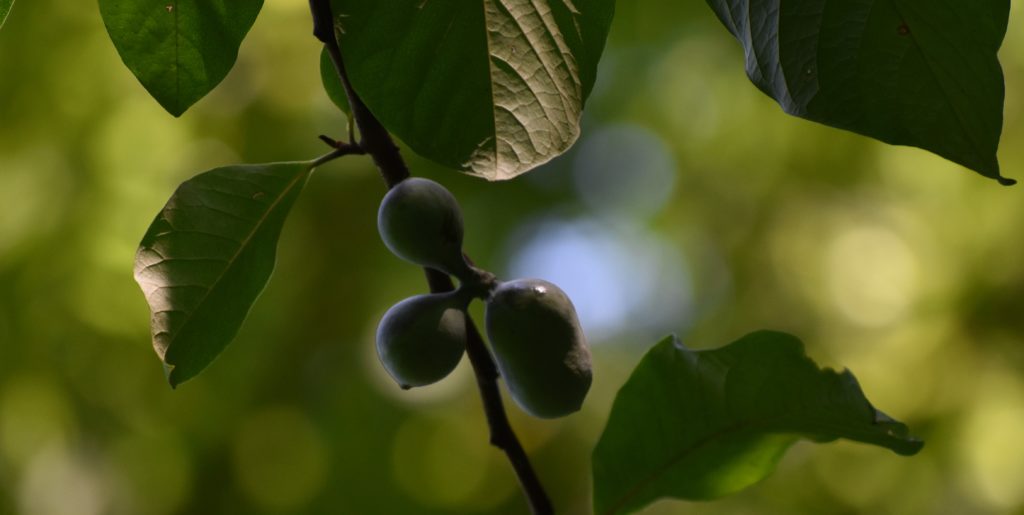
Around fifteen years ago I collected some paw paw fruits from Camp Tockwogh, the location where RRUUC held our fall retreat for many years. I threw the fruits in an appropriately looking damp area in Springsview Garden, and we now have a nice grove of mature trees. This year we have the first fruits that I’ve found. If you plant it….
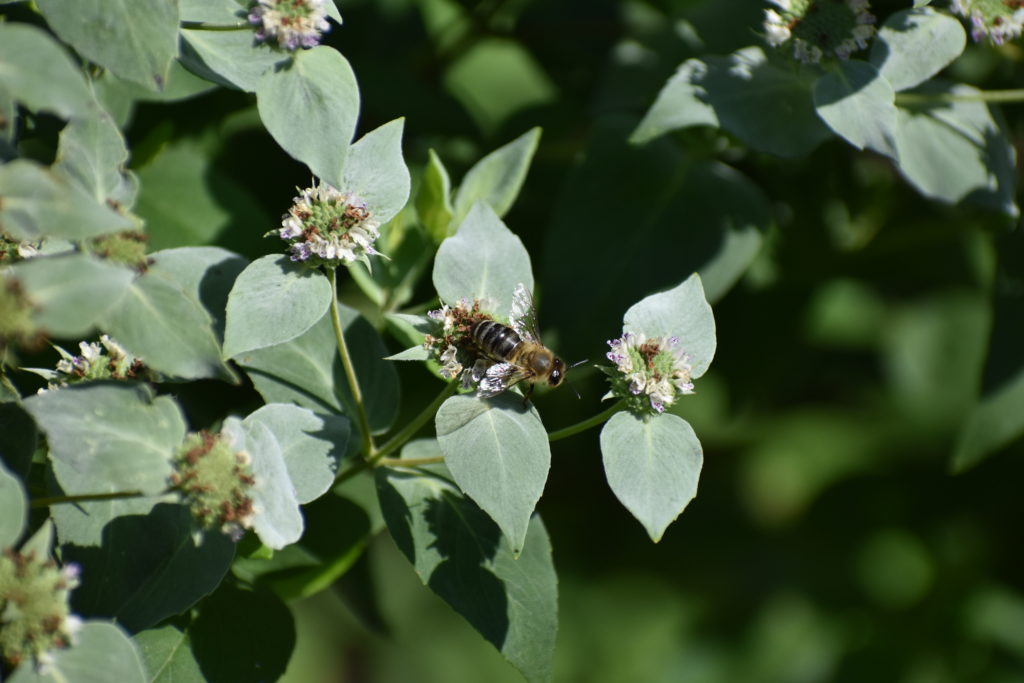
This spring we planted some Mountain Mint (Pycanthemum incanum) behind the sculpture in the Memorial Garden. While the flower is not showy, it is an absolute favorite of pollinators, such as this Honey bee.
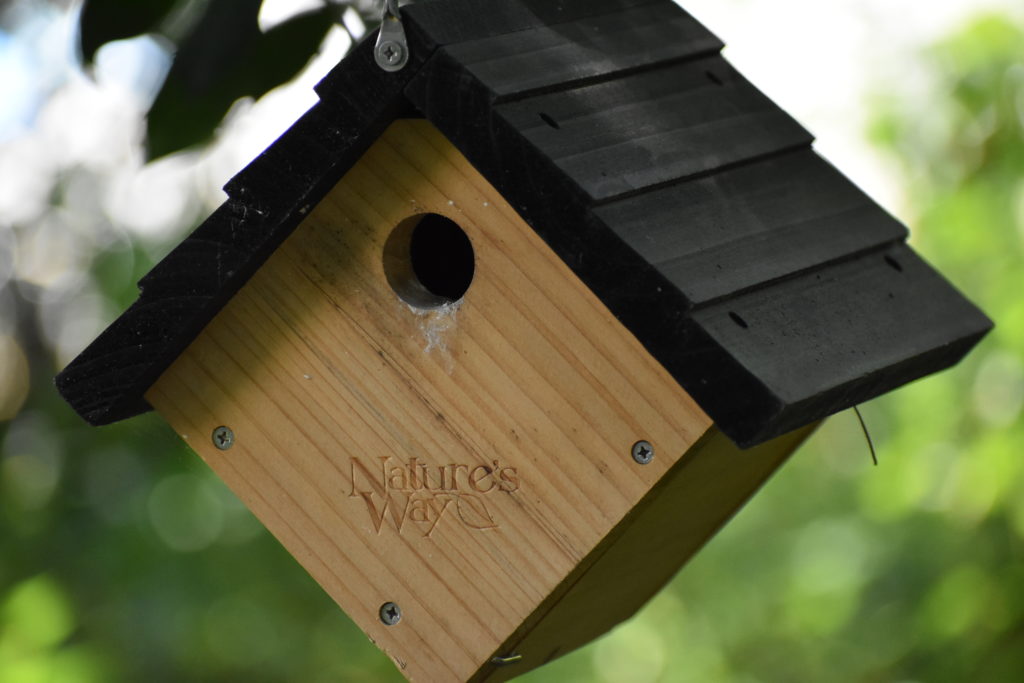
In late spring, I placed several bird houses on our grounds, hoping to attract some nesting wrens or chickadees. As far as I can tell, two of the houses were used by wrens, since I would regularly hear the young inside when walking past at certain times this summer. If you build it….
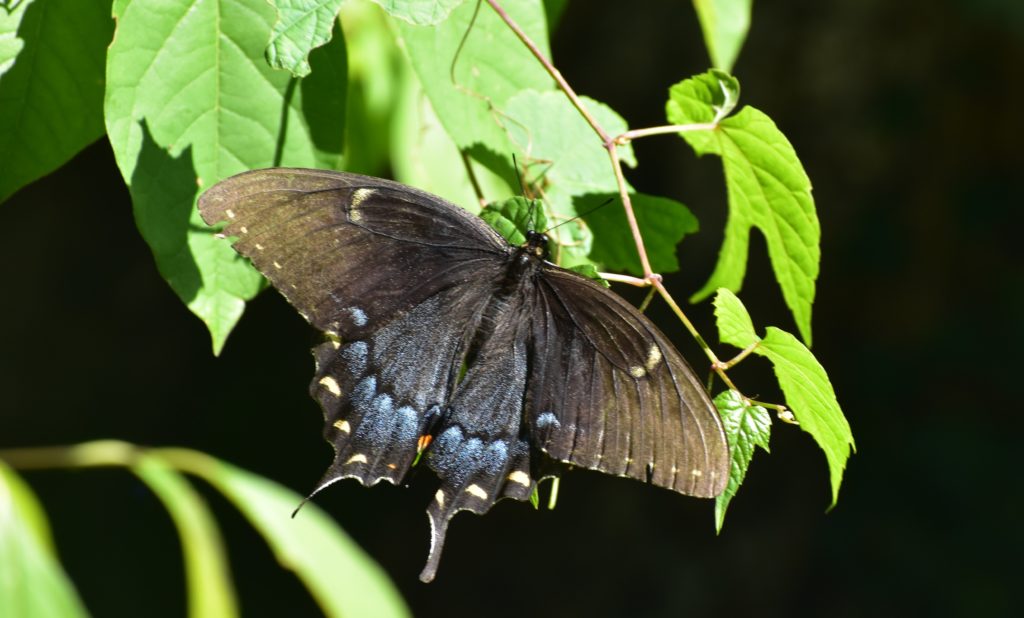
The most common under-story shrub in Springsview Garden is the Spicebush (Lindera benzoin). Today I saw this Spicebush Swallowtail butterfly near a Spicebush. Not surprisingly, Spicebush and Sassafras are the primary host plants.
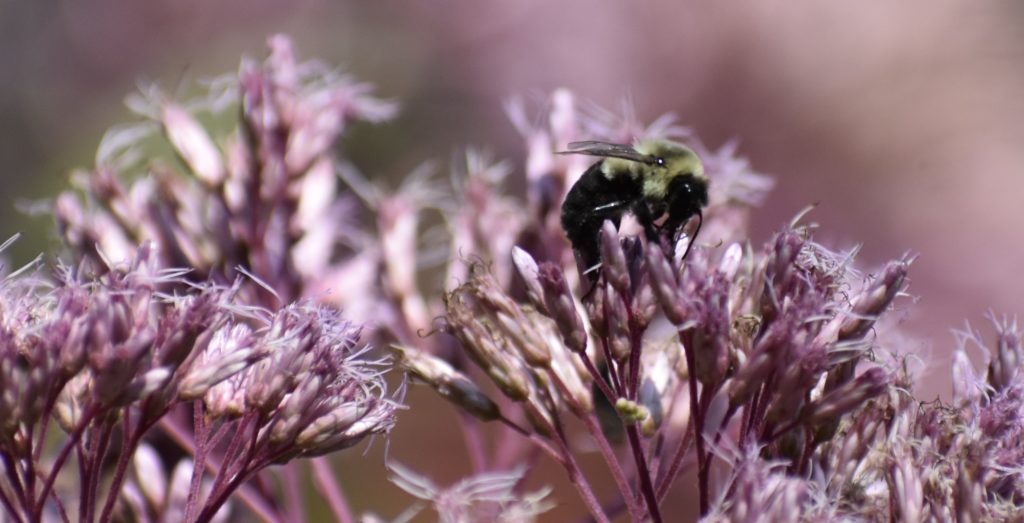
Many wonderful native plants were planted when we added our new addition, such as the Joe Pye Weed near the vegetable garden. These flowers often attract Bumble Bees (Bombus sp.).
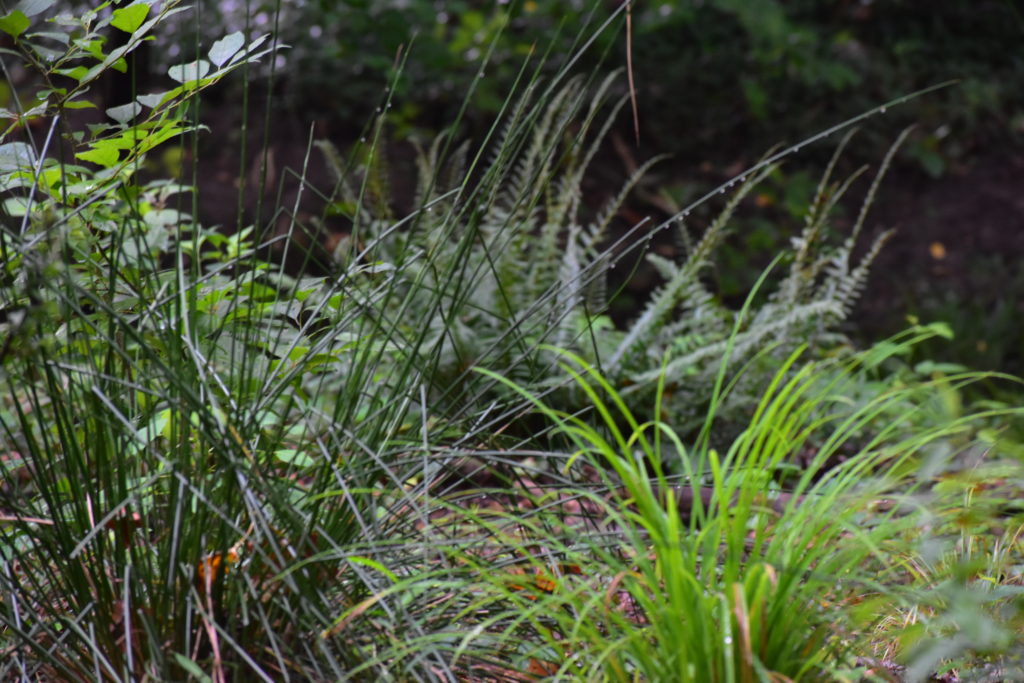
It’s hard to grow showy flowering plants in the shade of Springsview Garden, but certain plants are spreading where the habitat is suitable. From left to right is a rush, a fern, and a sedge. The rushes in particular are expanding along the stream areas (where you would expect to find them).
What habitat improvement can you do where you live? Can you plant native plants, remove non-native plants, put in a rain garden or a pond? Not only can you help the local ecosystem but you can be rewarded with hours of enjoyment watching the birds, butterflies, and other insects and animals.
Stay cool.
Joe
